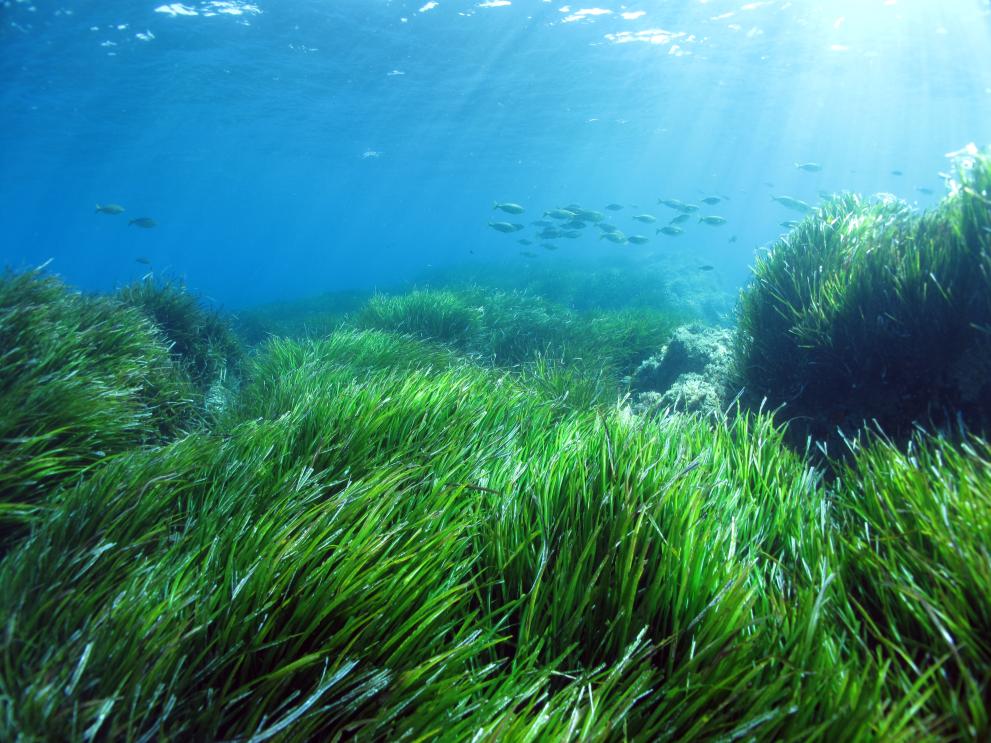
At 5 500 km long, France’s European coastline is home to an abundance of marine biodiversity. It includes 9 marine habitat types, including priority habitats for conservation, Posidonia beds and coastal lagoons. These are classified as marine protected areas, and in the EU the number of marine protected areas has increased by over 6% in 9 years, due to the expansion of the Natura 2000 network and Habitats Directive.
However, the French marine Natura 2000 network, still in its early stages, is far from reaching its conservation status objectives. Reasons include knowledge gaps about the marine life and environment, and the impact of human activities. LIFE Integrated Project Marine Habitats, also known as LIFE MarHa, is on hand to help.
Running from 2017 to 2025, the project’s goal is to improve the conservation status of the marine habitats listed in Annex 1 of the Habitats Directive by 2025 for over 150 Natura 2000 sites. These habitats are sandbanks covered by seawater at all times, Posidonia beds, estuaries, mud and sandflats not covered by sea water at low tide, coastal lagoons, large shallow inlets and bays, reefs, submerged or partially submerged caves and Submarine structures made by leaking gases. Covering over 25 800 square kilometres or about 35% of France’s territorial waters, the sites are located in both Atlantic and Mediterranean regions. By 2040, all habitat types should have reached favourable conservation status. To achieve this, LIFE MarHa has 9 objectives ranging from management to implementation, sharing actions, assessment and monitoring, financing, and putting conservation at its core.
More recently, the project’s activities have included a new technical reference framework for marine habitat restoration operations, offshore wind farms, marine farming, and fishing, and dredging and scouring. Additionally, LIFE MarHa has conducted a training programme focusing on marine ecosystems and administrative processes such as permits for using marine areas, as well as creating new tools and visuals aimed at educating and raising public awareness of marine habitat protection. In 2024, the project team is organising and taking part in a series of events including a Mediterranean marine seminar (12-14 March), the European Maritime Day (30-31 May), and a European seminar on soft-bottom habitats in the autumn.
LIFE MarHa’s wide range of stakeholders are vital to the project’s progress. They assist with sharing technical knowledge, scientific expertise, reporting, improving and promoting conservation efforts, and advising on policy implementation. Stakeholders include local authorities, scientific organisations, site managers and networks, sea users, environmental non-governmental organisations, the European Commission, and international counterparts. It aligns to the Conservation of natural habitats and of wild fauna and flora Directive.
Maritime conservation efforts are the focus of a new week-long series of events, the first European Ocean Days. Being held from 4 to 8 March, events will cover the EU Mission Ocean and Waters, future priorities for Europe’s Seas, blue innovation and investment opportunities, and ocean literacy activities.
Details
- Publication date
- 5 March 2024
- Author
- European Climate, Infrastructure and Environment Executive Agency

